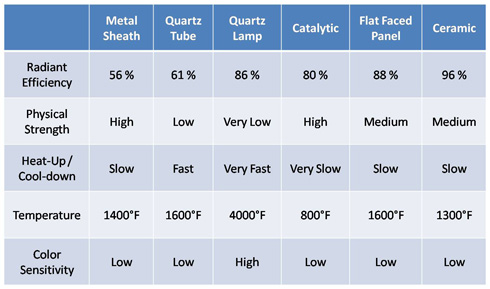Solid State Relay (SSR)
A solid state relay (SSR) has no moving parts. It is a transistor activated by a small AC or DC control signal produced by the temperature controller. This type of relays can switch up to several hundred amps in less than a second. They're used for heaters with low mass like radiant heaters (but not quartz tubes and quartz lamps which require a silicone controlled rectifier) and air heaters which require very frequent power switching. Solid state relays are usually mounted on a heat sink to dissipate the heat they generate. If several of these relays are mounted in a control panel, ventilation or even cooling of the control panel may be necessary.
Advantages over
electro-mechanical relays:
- faster reaction time
- increased life time of relay and heater
- no sparking during turn on
Infrared comparison




